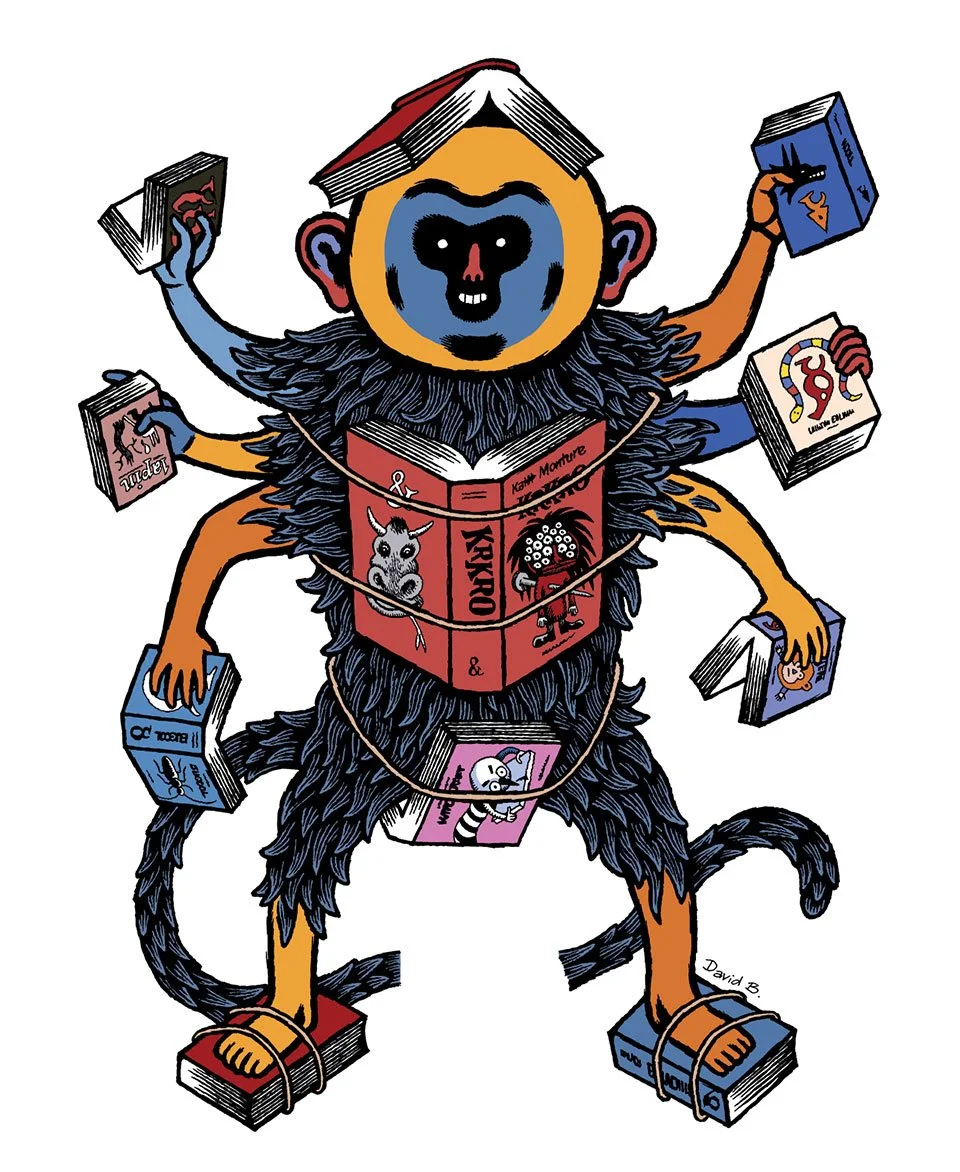Don Heck’s horror, World Literature Today, Nick Drnaso’s debut
April 3, 2016—Years before he co-created Marvel superhero Iron Man or penciled The Avengers, Queens, NY-born comics artist Don Heck was mostly drawing death. Heck drafted gory battlefield scenes in the 1950s for a company called Comic Media, where he "cultivated the horrific look of war comics," per historian Jim Trombetta. But there were monsters, too—through faithfully reproduced stories, covers, and researched supplementary material in Horror by Heck (Yoe Books/IDW Publishing), the artist is celebrated for his work on Comic Media's horror offerings.
Prior to the industry-crushing Comics Code of 1954, Don Heck was penciling and inking supernatural horror in Horrific and Weird Terror, which, like the famed E.C. books before them, featured werewolves, demons, and splashy title pages that screamed "Death Song" and "Full Moon." Editor Craig Yoe's Horror by Heck foreword unpacks Heck's professional history, but the artist's strengths are crystal clear in the swift perspective shifts and strong page composition that underpin action in "Man-Ape" (Horrific, 1954) and proto-psychedelia in "The Black Heart" (Weird Terror, 1954). While the storylines have aged as well as the colors—which reproduced badly due to the era's printing methods and lousy paper stock—Heck's pulpy art still stings, and if only for historical purposes, is well worth the inspection it gets here.
Guest-edited by critic, teacher, publisher, and The Best American Comics series editor Bill Kartalopoulos, nearly 40 pages of international comics coverage are included in the March-April issue of the University of Oklahoma, Norman's World Literature Today—"one of the oldest continuously published literary periodicals in the United States." Kartalopoulos writes about the appeal of international publishers and creators, and that the "constraints" of editing TBAC can make it difficult to keep up.
"Working on Best American Comics keeps me tightly focused on a very specific pool of material for countless hours every year, but it's incredibly valuable to have a broader international perspective as I make hundreds of critical distinctions and decisions," he writes in an introductory essay.
The issue's offerings include a discussion from Kartalopoulos on the work of Athens, Greece-based musician and comics creator Ilan Manouach (which features an interview), critic Elizabeth Nijdam on the work of German comics artist Anke Feuchtenberger, and more, each supported with visuals from the books. A digest of shorter reviews from academics follows: Among them, Alison Mandaville (California State) weighs in on Ethan Young's Nanjing: The Burning City with historical context, and Frederick Aldama (Ohio State) has a great piece on Fantagraphics' long-awaited The Eternaut, highlighting the valuable work of translator Erica Mena in a far stronger manner than I possibly could have in my Hyperallergic review. I've had WLT in my bag for weeks, digging in and back out of its worthwhile features and criticism.
Clean, bare backdrops and muted colors do nothing to soften the unsettling impact of "Pudding," a 21-page story within Beverly, but they certainly don't steer our attention from it. These new comics from Chicago-based artist and writer Nick Drnaso come from Drawn & Quarterly, home also to the work of Adrian Tomine, which is sometimes equally rife with the uncomfortable silences and troubled youths that populate Drnaso's stories.
The air is thick with gloom at the onset of "Pudding," as two teenagers abandon their suburb for a long drive across town one night. Behind the wheel is Tina, who tells unnerving stories to her companion Wes and is following potentially unreliable directions to a party at the home of an old childhood friend named Charlotte.
Drnaso's grids are sometimes fitted with up to 17 panels or so, and his characters are blocky mannequins, each in monochrome plain tees or zipped sweatshirts. At the party in "Pudding," the shifty teenagers are barely distinguishable from each other. They size-up Wes while his friend goes upstairs and shares an awkward dialogue with Charlotte. Tension builds, confessions are offered, and an early exit gives way to a creepy ride home that Drnaso produces as beautifully as everything else in Beverly, with controlled panel composition and a spare palette that magnifies the usually sinister undertone in his work.
"Comics can feel like doing animation, frame by frame, but you never get to see it played through," Drnaso told RJ Casey at The Comics Journal. "I’m just left to wonder if it works or if the story’s interesting."
Horror by Heck © 2015 Gussoni-Yoe Studio Inc. World Literature Today cover art by Pierre-François "David B." Beauchard, courtesy of the artist for World Literature Today. Beverly © 2016 Drawn & Quarterly.


